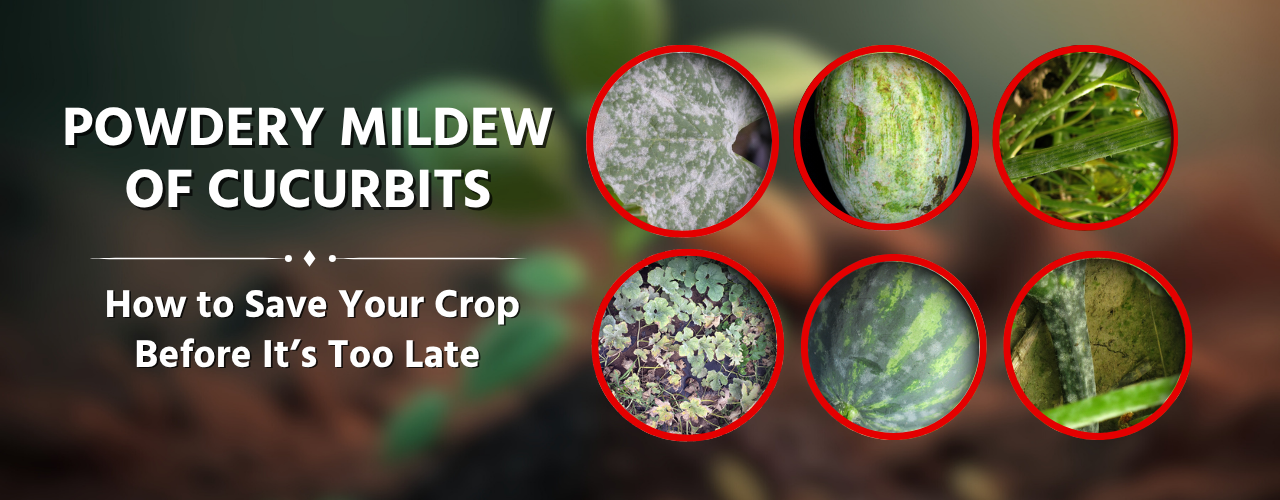Powdery Mildew of Cucurbits: How to Save Your Crop Before It’s Too Late
Image credit: GreenLife Crop Protection Africa
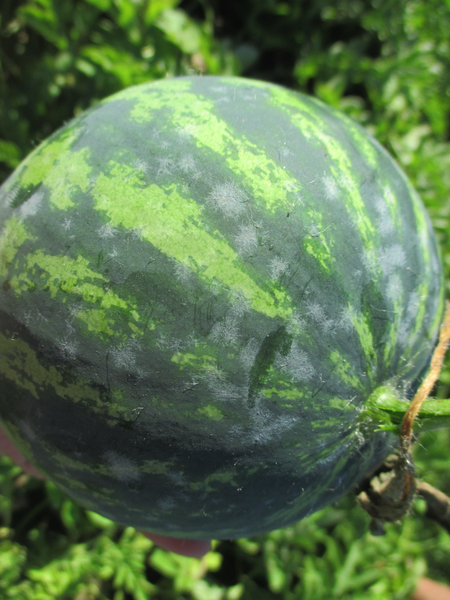
Image credit: VegCrop Hotline – Purdue University
Cucurbits—like cucumber, pumpkin, bottle gourd, bitter gourd, little gourd, watermelon, muskmelon, etc—are among the most commonly grown vegetable & fruit crops. However, one of the most persistent threats to these crops is Powdery Mildew, a fungal disease that can severely reduce yield and quality if not managed properly.
Let’s explore this disease in depth, understand its causes, symptoms, and most importantly, the permanent and sustainable solutions to control it.
Table of Contents
What is Powdery Mildew?
Powdery mildew is a fungal disease that affects a wide range of plants, including the entire cucurbit family (watermelon, bottle gourd, cucumber, muskmelon, pumpkin, bitter gourd, etc.).
It is caused by species of Podosphaera and Erysiphe. It thrives in warm, dry climates with high humidity at night—perfect conditions during many stages of cucurbit cultivation.
It is characterized by the development of white, powder-like spots on the aerial parts of the plants, which can rapidly spread and cause severe crop losses if left unmanaged.
Unlike most fungal diseases, powdery mildew does not require wet leaves to infect plants, making it particularly challenging to manage.
Scientific Name of Causal Organisms
In cucurbits, powdery mildew is mainly caused by two fungal pathogens:
- Podosphaera xanthii (formerly known as Sphaerotheca fuliginea)
- Erysiphe cichoracearum
Both species can coexist but usually, Podosphaera xanthii is considered the more aggressive and widespread in cucurbits.
Scientific Classification of Powdery Mildew Pathogen
| Category | Classification |
| Kingdom | Fungi |
| Phylum | Ascomycota |
| Class | Leotiomycetes |
| Order | Erysiphales |
| Family | Erysiphaceae |
| Genus | Podosphaera or Erysiphe |
| Species | Podosphaera xanthii / Erysiphe cichoracearum |
Symptoms of Powdery Mildew Disease
1. Symptoms on Leaves
Leaves are the first and most commonly affected part by powdery mildew. The earliest signs begin as small, circular, white powdery spots on the upper surface of older leaves. These spots rapidly expand, merging together to form large patches that cover significant portions of the leaf. As the fungal infection progresses, the leaves begin to yellow, curl, and become brittle. Severe infections lead to premature leaf drop, which reduces photosynthesis, weakens the plant, and exposes fruits to sunburn and pests.
Symptoms on leaves – white powdery spots
Image credit: GreenLife Crop Protection Africa
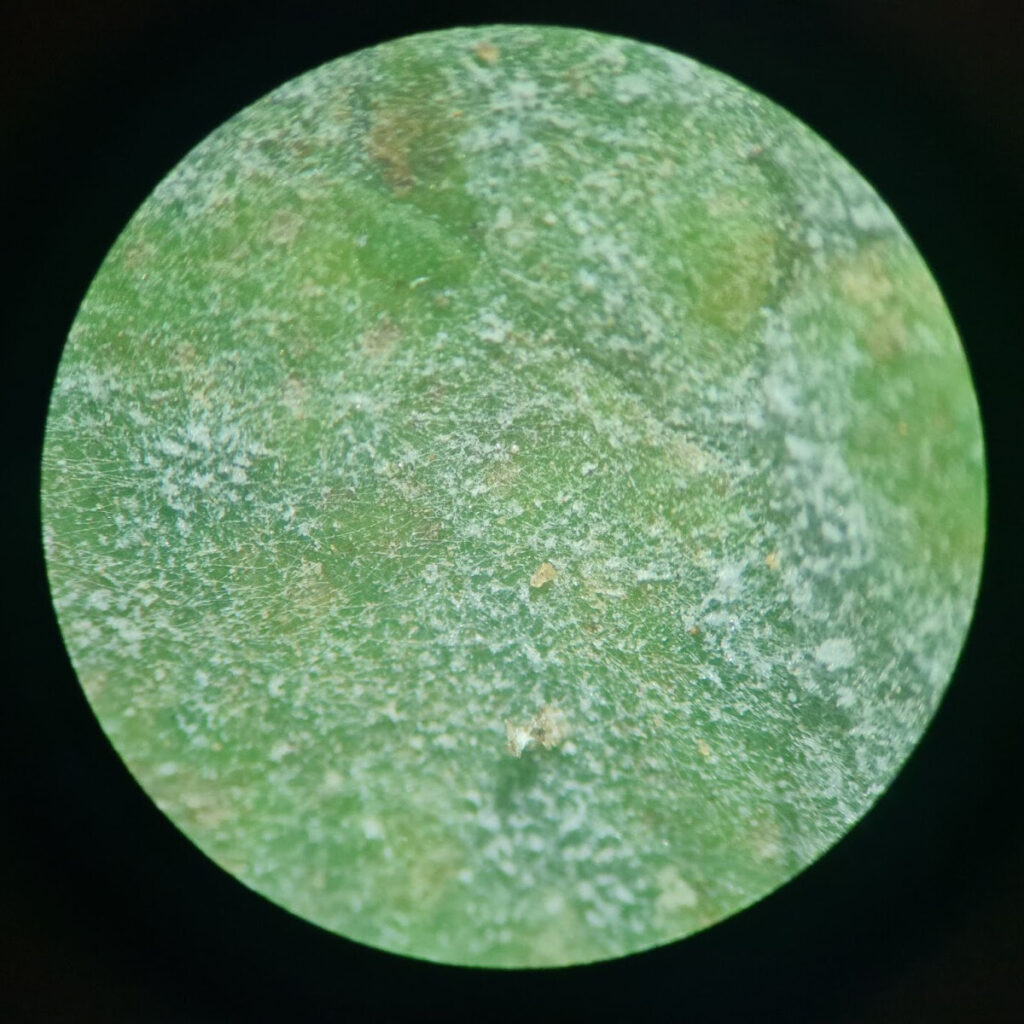
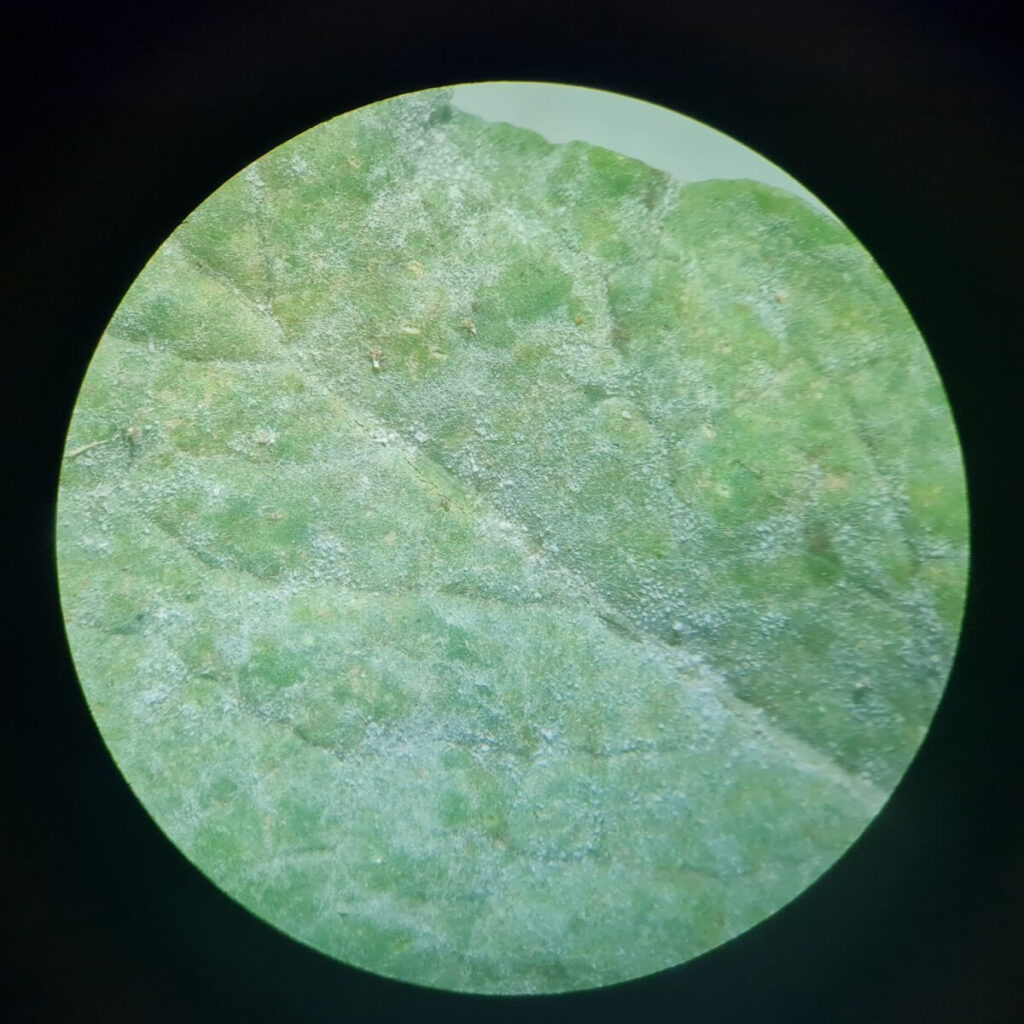
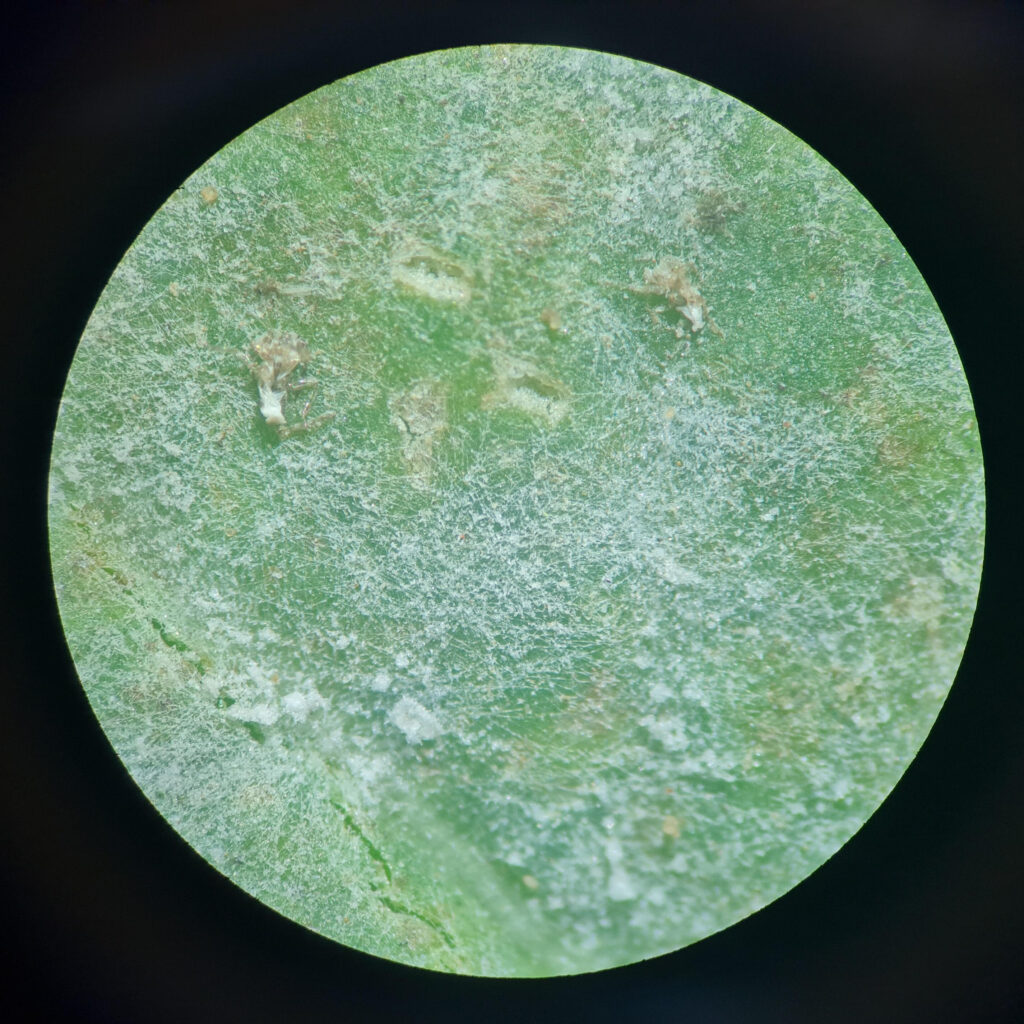
Mycelium of Powdery mildew fungus observed under stereomicroscope on leaves
2. Symptoms on Twigs / Vines
Powdery mildew also infects the tender twigs and creeping vines of cucurbit plants. Affected vines exhibit a whitish fungal coating similar to what appears on the leaves. Over time, infected vines lose vigor, show signs of stunted growth, and in extreme cases, may begin to die back from the tips. This directly impacts nutrient and water flow to the growing points and fruits, resulting in poor overall plant development.
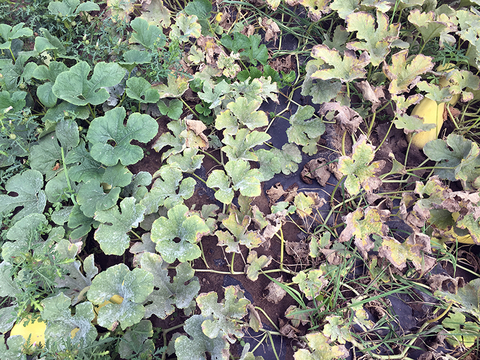
Powdery Mildew causing leaf die back in vines
Image credit: University of Minnesota Extension
3. Symptoms on Flowers
In flowers, powdery mildew causes premature flower drop, especially in young and developing blooms. Infected flowers are often smaller in size, malformed, and may show a light powdery coating on the outer petals. As a result, pollination becomes ineffective or incomplete, leading to poor fruit set and reduced yield. In commercial crops, this can significantly lower the number of harvestable fruits per plant.
4. Symptoms on Fruits
Although less common than leaf infection, powdery mildew can also affect fruits, especially during the flowering to early fruiting stage. Symptoms include surface blemishes, dull fruit skin, and in some cases, misshapen or undersized fruits. The sugar content (BRIX) of the fruit may decline, affecting taste and market value. In advanced infections, fruits may crack, develop poor shelf life, or fail to mature properly.
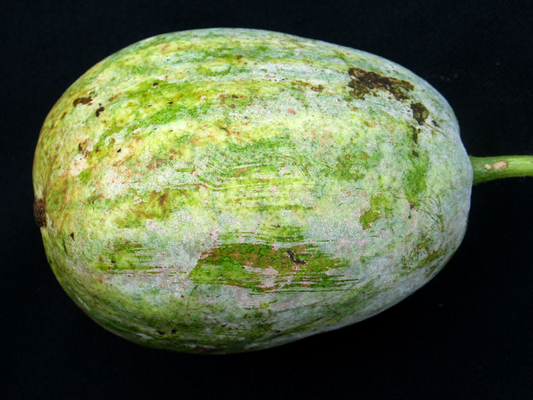
Symptoms on fruit- showing surface blemishes, dull fruit skin
Image credit: Cornell University – Fruit & Vegetable Blog

Symptoms on fruit- showing white powdery spots
Image credit: VegCrop Hotline – Purdue University
5. Symptoms on Stems
Stems close to infected leaves or vines may also become coated with a fine white fungal growth. Infections on stems are usually a sign of advanced disease spread and often accompany general wilting of the plant. Affected stems may also show signs of shrinkage or slight cracking, indicating damage to the epidermis and underlying tissues.
Together, these symptoms not only reduce the quality and quantity of produce but also weaken the plant systemically, leaving it vulnerable to secondary infections and abiotic stress. Timely identification and action are critical to prevent long-term crop damage.
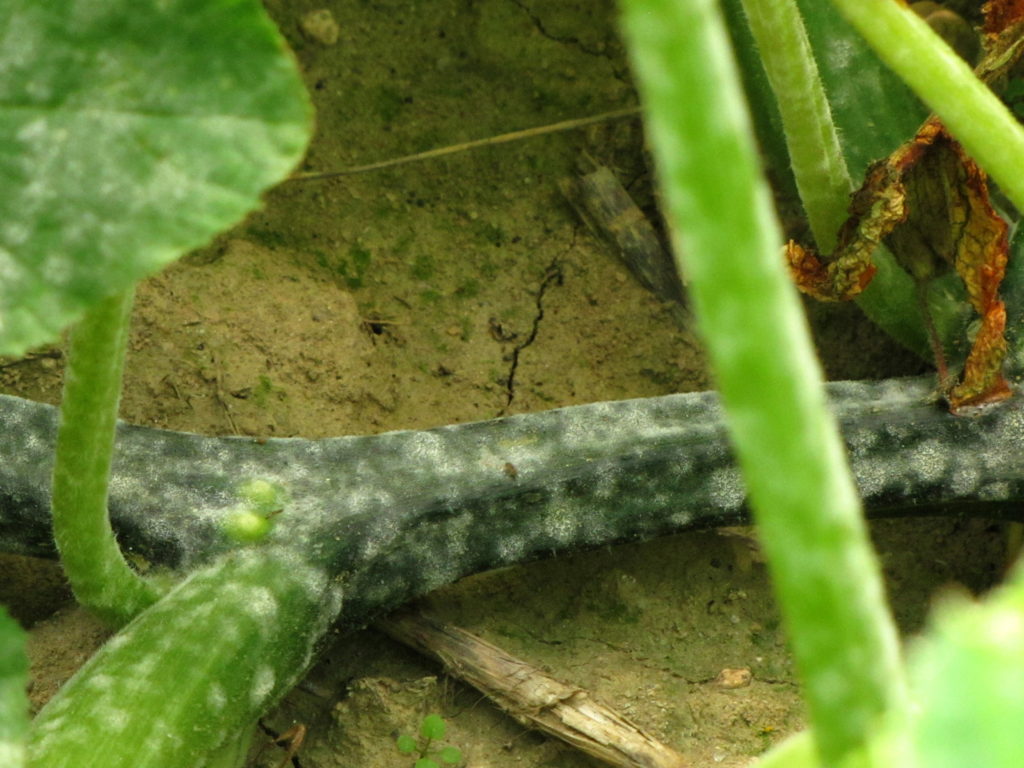
Symptoms on stem -coated with a fine white fungal growth
Image credit: Cornell University – Live Vegetable Pathology Gallery

Symptoms on stem -coated with a fine white fungal growth
Image credit: Cornell University – Live Vegetable Pathology Gallery
Powdery Mildew Disease Cycle
The powdery mildew pathogen (commonly Podosphaera xanthii in cucurbits) follows a polycyclic disease cycle, meaning it repeats multiple times during the growing season, causing repeated waves of infection.
1. Survival (Overseasoning Stage)
2. Primary Infection (Initial Disease Establishment)
3. Secondary Infection (Rapid Spread)
4. Reproduction and Spore Dispersal
5. Re-establishment / Continuation
1. Survival (Primary Source of Inoculum)
The fungus overwinters (survives off-season) in the form of cleistothecia (closed, sexual fruiting bodies, containing spores), mycelium, or conidia on:
• Plant debris in the soil
• Infected volunteer cucurbit plants
• Nearby weed hosts
• These dormant forms stay viable in dry plant matter, waiting for favorable environmental conditions.
2. Primary Infection
• At the start of the crop season, spores from cleistothecia or overwintered mycelium germinate.
• Airborne spores (conidia) land on young leaves, especially older leaves at the plant base.
• Within 4–12 hours, they begin to germinate, penetrating the outer epidermis without needing water, unlike most fungi.
3. Colonization & Secondary Source of Inoculum
• Once inside the plant, the fungus develops mycelium across the leaf surface and starts drawing nutrients from the host.
• Conidia (asexual spores) begin forming on the infected tissue within 3–5 days.
• These conidia are then easily dispersed by wind, spreading to new leaves and neighboring plants.
• This leads to multiple secondary infections, repeating every 5–7 days.
4. Spore Dispersal
• Thousands of spores are produced and released from each infected site.
• They travel via wind, insect movement, and even field workers’ clothing/tools.
• Since no free moisture is needed for infection, spread can occur even in dry weather — provided humidity is high at night.
5. Cycle Continuation
• This secondary cycle repeats 4–6 times per month, leading to explosive disease outbreaks if unchecked.
• If crop residues are not destroyed post-harvest, the fungus persists into the next season, starting the cycle again.
Why Understanding Inoculum Sources is Critical
- If only the secondary spread is managed but the primary source is not removed, the disease will recur every season.
- Sustainable disease control must begin by eliminating primary inoculum before sowing and continue with strategic suppression of secondary inoculum during the crop cycle.
Favorable Conditions for Powdery Mildew Spread
1. Temperature: 20°C–30°C (Ideal for Spore Germination)
Powdery mildew fungi thrive in moderate temperatures. The 20°C to 30°C range provides an optimal environment for spore germination and fungal growth.
- Below 20°C, the fungus slows down its development.
- Above 30°C, the spore viability and infection rate drop significantly.
- Within this range, spores germinate rapidly on leaf surfaces, especially under shaded or canopy-covered areas where heat stress is reduced.
Why it matters: Crops growing in such climates are at high risk unless preventive steps are taken.
2. Humidity: High Nighttime Humidity (60–90%)
Powdery mildew needs moisture in the air (not liquid water) to germinate and colonize host surfaces.
- During the night, transpiration slows and humidity builds up around leaf surfaces.
- This microclimate creates a dew-like moist layer, favorable for fungal spores to initiate germination and infection.
Note: Daytime may be dry, but if nights are humid, it gives the fungus the perfect environment to start infection silently.
3. Dry Days: No Free Water Needed
Unlike many fungi that require water films (rain or overhead irrigation) for spore germination, powdery mildew is unique:
- It does not need free-standing water.
- In fact, wet leaf surfaces can inhibit spore germination.
- Dry days with high humidity (especially in the evening and early morning) create the perfect storm for this fungus to thrive.
Why this is dangerous: Farmers often assume that if it’s not raining, fungal diseases won’t spread — but powdery mildew breaks that logic.
4. Dense Planting: Less Airflow Encourages Spore Settlement
In tightly spaced fields or orchards:
- Canopy becomes dense with poor airflow.
- This causes humid microclimates under the leaves.
- Reduced ventilation leads to longer survival of fungal spores and helps them settle and colonize nearby leaves easily.
Ideal control is open ventilation — without it, the disease moves rapidly from one leaf to the next like wildfire.
5. Excess Nitrogen Fertilization: Soft Tissue = Easy Entry
When nitrogen fertilizers are overused:
- Plants produce lush, soft, and succulent growth.
- These soft tissues have thin cell walls, making them highly vulnerable to fungal penetration.
- Also, such leaves retain more surface moisture, encouraging mildew spores to settle and germinate.
Hidden danger: High nitrogen may look like healthy green growth, but it opens the door for faster fungal attacks.
Things to Take Care of for Successful Powdery Mildew Control
- Start preventive action early before visible symptoms.
- Boost plant’s natural immunity by promoting strong photosynthesis.
- Focus on complete system correction, not just foliar sprays.
Management Tactics for Powdery Mildew
- Maintain proper plant spacing for good airflow.
- Avoid excessive nitrogen, as it promotes soft, vulnerable tissue.
- Remove infected debris post-harvest to reduce the primary source of inoculum.
Huntin Organics Recommendations for Permanent Powdery Mildew Control
- A Proven Organic Protocol for Cucurbit Health and Disease Prevention
- Safe for use during any crop stages
Step 1: First Protective Shield
When to Use: Begin application as a preventive measure or at the very early stage of disease appearance.
Why: This step helps neutralize spores
SPRAY:- 100% : 1 ml / lit of water + Nano reach : 1 ml / liter of water
Step 2: after 30 minutes to 24 hrs. after Step 1
Spray: Disnil Soil – 1 ml / liter of water + Nano Sulf – 2 ml / liter of water + Nano Reach – 1 ml / liter of water
Spray precautions
- Ensure uniform spray coverage on both upper and lower leaf surfaces and whole plant
- Apply during early morning or late afternoon

Soil Application of – Seed Grow ++ @ 1 Litre per Acre.
Repeat this application at interval of every 15 days. Seed Grow++ promotes a healthy root system and efficient mobilization and uptake of nutrients, which strengthens the plant’s natural immune system to fight against disease.
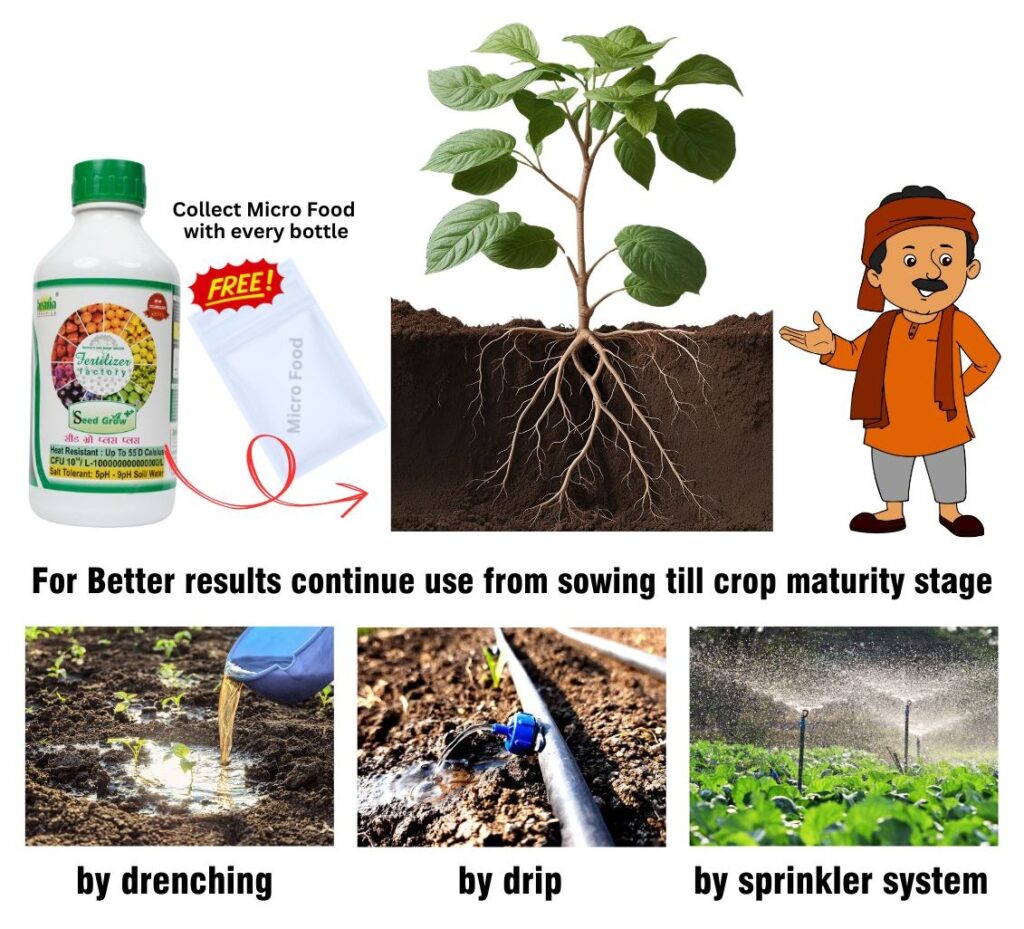
Reapplication Schedule
To maintain control during high-disease-pressure, repeat Step 1 and Step 2 every 7–10 days.
Why Repetition Is Crucial:
- Powdery mildew fungus life cycle continues every 5 – 7 days under optimal conditions.
- Repeated sprays break the fungal life cycle at every stage – spore, mycelium and resting body.
- Ongoing sprays ensure new plant growth is protected.
Why This Protocol Works:
Uses natural and plant based bio components, safe for beneficial insects
No resistance development
Chemical residues free — export-friendly and eco-safe
Enhances nutrient uptake and photosynthesis with nano-sulfur support
A Brief Product Details :
100% – An organic plant extracts having anti-fungal & anti bacterial properties 100 % Percent – Huntinorganics
Nano Reach – A 100% pure silicone-based non-ionic surfactant, spreader, adjuvant that increases stomatal infiltration and spreading of the active ingredient Nano Reach – Huntinorganics
Nano Sulf – A sulfur- and potash-based nano formulation that acts as nutrient, contact fungicide, photosynthesis enhancer.
Disnil soil – Bio fungicide consortium containing Trichoderma v., Trichoderma h., Pseudomonas f., Bacillus s.
Seed Grow ++ is a synergistic combination of highly effective 12 biological strains of Bacteria and Endo mycorrhizae that solubilize and mobilize the plant macro and micronutrients such as N, P, K, Ca, Mg, S, Si, Zn, etc that improves nutrient balance in plant, effective root development, stress management, improvement of soil structure.
Balanced nutrition is the most important factor in plants to fight against any disease.
For more detail on CUCURBIT CROPS’ diseases & insect pest and its control, please visit-
Learn the best practices and techniques from our guide for Bottle Gourd Cultivation Guide.
Improve your yield with expert tips for Bitter Gourd Farming Practices.
Discover useful insights and growing methods for Little Gourd (Ivy Gourd) Crop Insights.
Follow step-by-step instructions for Cucumber Growing Techniques.
Maximize your harvest with our guide for Watermelon Farming Guide.
Cultivate juicy and healthy fruits using our tips for Muskmelon Cultivation Tips.

